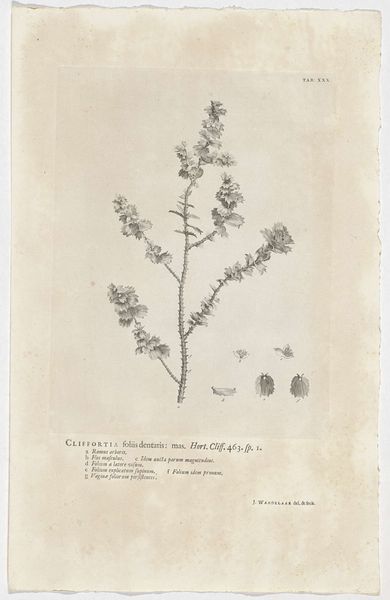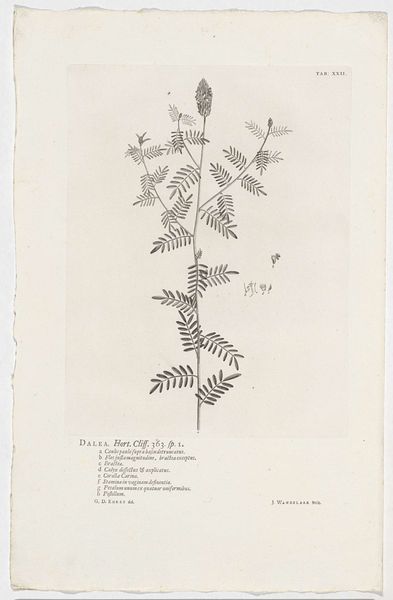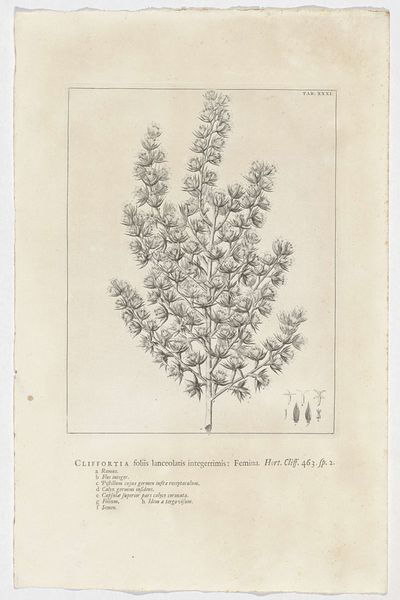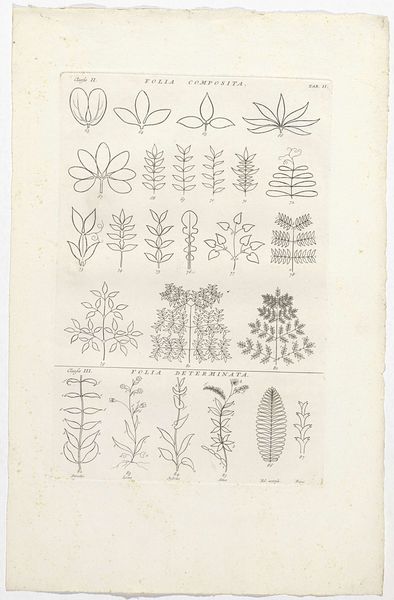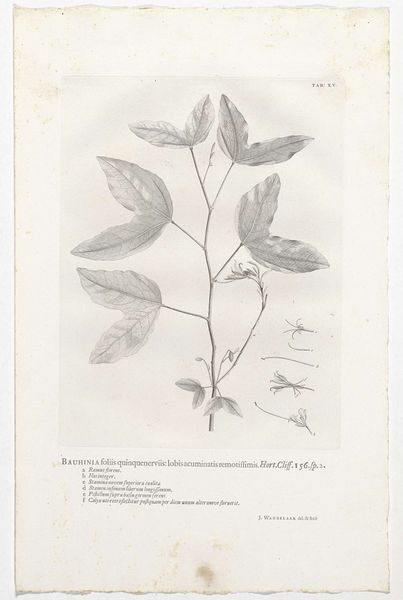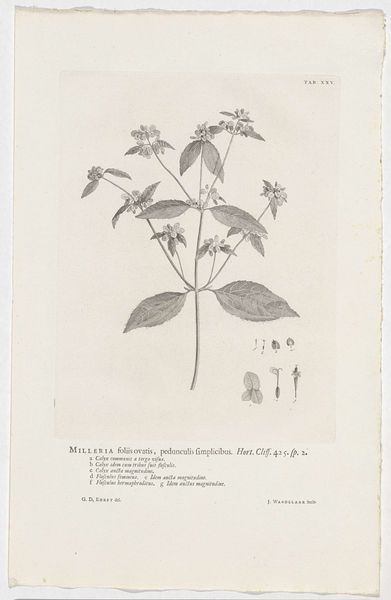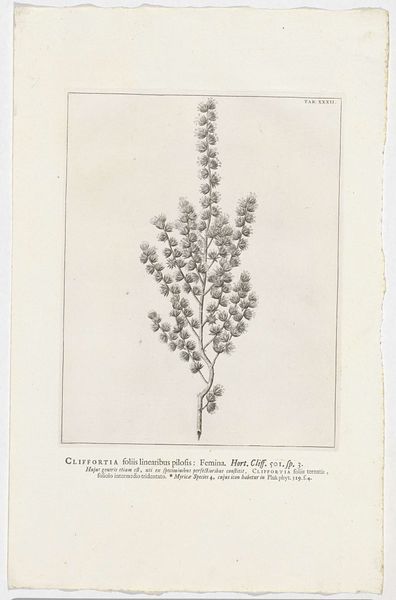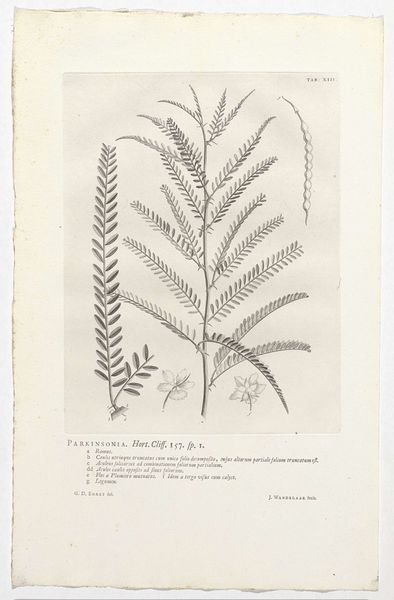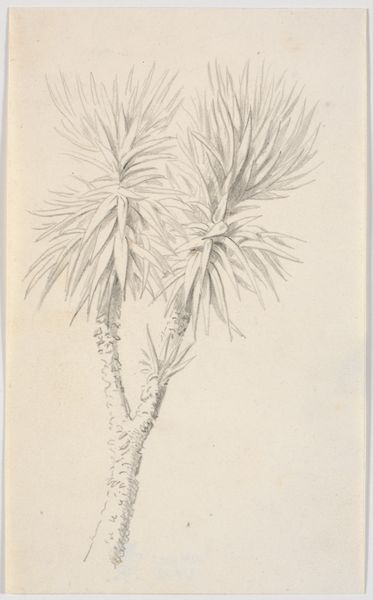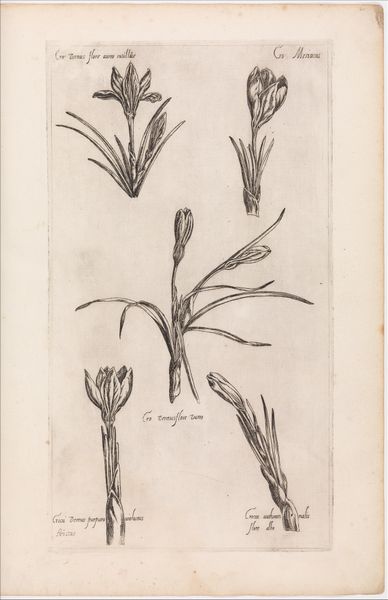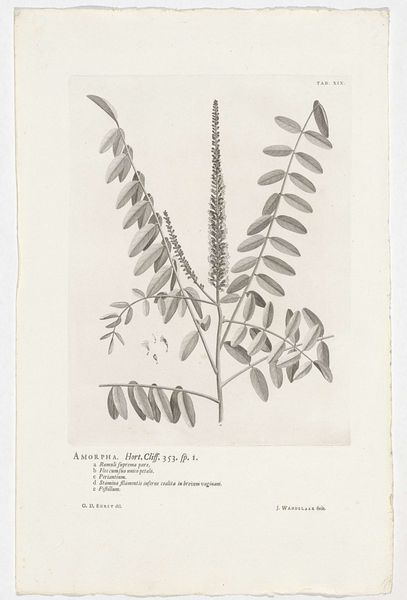
drawing, print, etching, engraving
#
drawing
# print
#
etching
#
old engraving style
#
flower
#
personal sketchbook
#
plant
#
engraving
Dimensions: height 282 mm, width 221 mm
Copyright: Rijks Museum: Open Domain
This botanical illustration of Roella ciliata was made by Jan Wandelaar, probably in the first half of the 18th century. It's an etching, meaning that the artist would have painstakingly drawn the image into a wax ground on a metal plate, then bathed it in acid. The material qualities of the print—its fine, delicate lines and its tonal range, from light grays to deep blacks—speak to the time-consuming nature of etching. It's easy to imagine the artist hunched over the plate, carefully rendering each tiny detail of the plant's form. Botanical illustrations like this one were important for scientific study, of course. But they also reveal a growing fascination with the natural world during the Enlightenment, and the expansion of European power into places like Ethiopia, where this plant was found. In that sense, even a seemingly objective image like this one tells a story about labor, exploration, and the social context in which it was created. It reminds us that even the most delicate artwork is the result of complex processes and cultural forces.
Comments
No comments
Be the first to comment and join the conversation on the ultimate creative platform.

